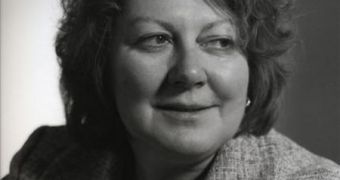In a bid to gain a deeper understanding in the formation and operation of turbulent flows, physicists at the University of Warwick have made clever use of the Ulysses spacecraft, as well as of the fact that the Sun is still at its solar minimum. The result was the equivalent of a lab workbench more than 200 million miles long, on which the group had the chance to study numerous phenomena related to space plasma. Turbulences that appear when solar wind flows occur were also investigated.
University of Warwick plasma astrophysicists professor Sandra Chapman and Dr. Ruth Nicol were the leaders of the team that conducted the new work. The research was mostly focused on an ideal mathematical model of turbulence in fluids. The model is called ideal because, in it, the flow of gas is infinitely large. The thing is that, until now, researchers have only had the chance of testing this hypothesis in small, laboratory settings, but never got the chance to study the events at a large scale.
This is precisely why the Ulysses – a robotic Sun exploration probe – was used for the work. Data collected from it, combined with information on the last two solar minimums, offered the UW team the ideal setting to overcome this gap in knowledge. The group was also able to measure something known as the magnetohydrodynamic (MHD) flow, which is basically a study on the dynamics of electrically conducting fluids, in the solar plasma.
One of the main finds was that there is a universal basic property governing the evolution of magnetohydrodynamic turbulence over finite distance. The team says that, if this conclusion holds true in the 200 million mile scenario, then it must be true for smaller, lab settings as well. The group also discovered that, in the case of the last two solar minimums, the property governing the turbulences was roughly the same, regardless of the total amount of energy that was in the system.
“These results are not just an interesting piece of astrophysics or turbulence research as the work has been produced in the University of Warwick's 'Center for Fusion, Space and Astrophysics' and the results have also immediately come to the attention of our colleagues interested in how turbulence evolves in confined plasmas on Earth – which will someday generate fusion energy,” Chapman says.
“Turbulence is a big problem for colleagues interested in keeping the hot plasma confined long enough for burning to take place to generate fusion power and this may give those colleagues some valuable new insights,” she adds. Details of the work, which was mainly funded by the EPSRC (The Engineering and Physical Sciences Research Council), have just been published in the respected scientific journal Physical Review Letters.

 14 DAY TRIAL //
14 DAY TRIAL //